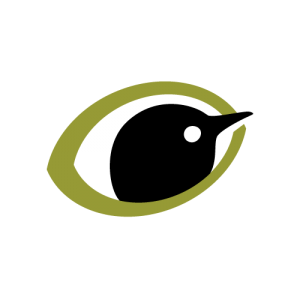Citation

Overview
Work on emerging infectious diseases and garden birds in the UK has been supported by citizen science projects, most notably Garden BirdWatch, Garden Wildlife Health and the Garden Bird Health Initiative – the latter now superseded by Garden Wildlife Health. Through these schemes, researchers have been able to carry out national surveillance of emerging diseases, including finch trichomonosis, Paridae pox and passerine salmonellosis. This paper, part of a special issue of Philosophical Transactions focusing on wildlife disease issues, reviews the work that has been carried out on these diseases over the past 25 years. It also takes a look at the occurrence of mycotoxin contamination of food residues in bird feeders, which also pose a risk to the health of wild birds.
In more detail
A citizen science approach provides a cost-effective means to undertake large-scale and year-round disease surveillance (Garden Wildlife Health), delivered in parallel to the monitoring of wildlife populations (Garden BirdWatch). By combining large-scale surveillance and targeted post-mortem examinations we can differentiate between the multiple diseases that result in non-specific clinical signs (e.g. lethargy and a fluffed-up appearance). The sample archive collected through post-mortem examination also enables future identification of other disease agents, including those – such as environmental pollutants – associated with non-infectious disease.
Avian trichomonosis, caused by the protozoan parasite Trichomonas gallinae, has long been known to affect pigeons, doves and birds of prey. Its emergence in finches in 2005 led to a major population decline in Greenfinch and Chaffinch, reported in an earlier paper. While multiple strains of Trichomonas gallinae are known to infect pigeons and doves in the UK, a single clonal strain is responsible for the epidemic seen in finches. Quite why Greenfinch is so susceptible to the disease is unclear. It is likely that the disease spilled over into finches following the increase in use of garden feeding stations by Woodpigeon, a recent change that follows an increase in wider countryside populations.
Avian poxvirus has been documented in a number of garden bird species and is most often seen in House Sparrow, Starling, Woodpigeon and Dunnock. Its emergence in UK tits saw a more severe form of the disease, resulting in pronounced skin lesions, some of which were likely to have hampered the individual’s ability to feed and to avoid predators. Sequence analysis of the poxvirus strains affecting garden birds revealed that a single clade is responsible for the disease seen in UK tits. This form has been known in Scandinavia since the 1950s, with incidents seen elsewhere in mainland Europe since 2005. Because UK tits are relatively sedentary in their habits, and because of the geographical pattern of disease spread seen, it is likely that the disease reached the UK via a biting insect – such as a mosquito, crossing the English Channel in a warm plume of air.
Salmonellosis has been reported in wild birds since at least the 1950s, with the bacterium responsible known to be capable of persisting in the environment for many months. Greenfinch and House Sparrow are the two species in which the disease is most often seen. Passerine salmonellosis incidents have a clear seasonality, peaking in January. Interestingly, the prevalence of the disease in UK passerines has dropped sharply over recent years. This may reflect increased immunity to the particular form (DT56v) that had been seen here; or it may be that transmission is density-dependent, with the sharp decline in Greenfinch populations resulting in much lower rates of transmission.
Mycotoxins, which include the aflatoxins and ochratoxin, are secondary metabolites produced by certain fungi of the genera Aspergillus and Penicillium. Exposure to the aflatoxins and ochratoxin can exert a range of adverse effects in birds, and the fungi involved and their toxins are known to occur on foodstuffs, including peanuts. Food residues from bird feeders were screened for the toxins as part of the current study, with detectable aflatoxin residues found in all seven samples, two of which greatly exceeded the maximum permitted limits set for such residues in peanuts destined for livestock feed, which includes wild bird food. It therefore seems likely that garden birds may be exposed to these toxins at levels associated with toxic effects in captive birds.
This review underlines the great deal of new information that has been generated through these citizen science projects. It also highlights future research needs, particularly around the identification of risk factors, and that we need to understand the balance of risks and opportunities that garden bird feeding provides.
Read a related article from Bird Table - the magazine of the Garden BirdWatch survey - .
For more information on Garden Wildlife Health, please visit www.gardenwildlifehealth.org.


